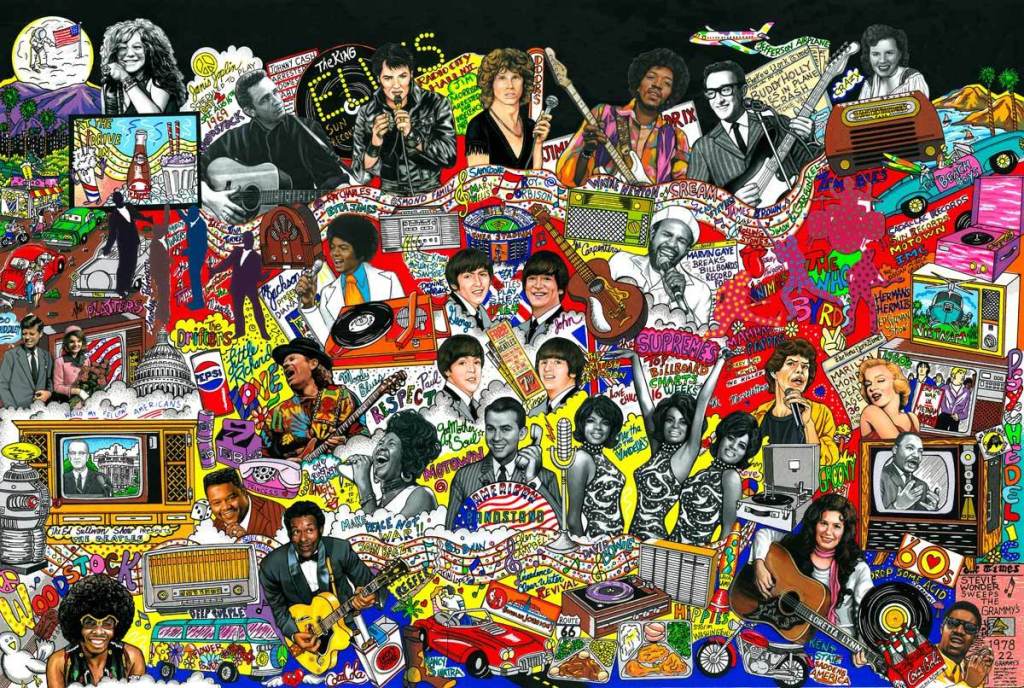There was a time when the realms of popular culture and religion did not meet — at least in an academic or analytic sense. The space betwixt, between, around, and interpenetrating each was relatively unexplored. Into that gap came God in the Details: American Religion in Popular Culture with the contention that to understand American religion today researchers must enter the interstitial spaces — the borderlands — that straddle the boundaries between religion and popular culture.
Today, the field of religious and popular culture studies is rich in both depth and diversity. From the exploration of popular culture as a “hyper-real” religion (Adam Possamai), to the examination of aesthetics and material religion (S. Brent Plate and David Morgan), audience-centered surveys of media (Stewart Hoover), and delineation of “authentic fakes” (David Chidester) the research on religion and popular culture is varied and voracious.
In part, the plethora of studies currently available and the profusion of contemporary projects emerged out of the work of McCarthy and Mazur in both editions of God in the Details. Recognizing that the field itself is fluid and that observations of present popular culture phenomena can be obsolete almost as quickly as they were relevant, the editors were sure to release a sequel to their original 2000 work with a 2011 second edition. The principles at play in their particular approach to religion and popular culture still stand.
McCarthy contends — in both her writing and this podcast — that popular culture is an important site for understanding religion in American culture, principally because of the de-institutionalization of religion and the concomitant rise of alternative, assorted, and atypical religious conglomerations and practices. As such the hybrid “third spaces” (Homi K. Bhabha) that proliferate in the contact, cooperation, co-option, and conflict that exist between religion and popular culture offer ample opportunity for resonant readings of religion in the 21st-century.
Indeed, religion and popular culture are engaged in a dialectic of exchange and interpenetrative feedback, where religion expresses itself in popular culture, popular culture expresses itself through religious memes, religion reacts to popular culture’s representations, and popular culture reacts to religion. Yet, the two cannot be so easily divided into separate categories. Often, religion and popular culture are all mixed up.
Thus, it is helpful that McCarthy proposes that, “[b]oth the field of popular culture studies and the material it examines…seem to be growing at a pace that outstrips the analytical categories and methods available” (Mazur and McCarthy, 3). McCarthy makes the point that the conventional distinction between religion and popular culture is perhaps worth calling into question. At the very least, it is necessary to pay attention to, listen and learn from, and discern the meanings of the “intersection of religion and culture in the ordinary experiences” of individuals across the globe. This is paramount not only terms of understanding and interpreting materials and productions, but of cultures and people, of sodalities and social interlocutors. Mazur and McCarthy wrote, “the borderland where religion and culture meet in popular expression is also a borderland of another sort….these quasi-religious popular culture sites serve as points of intersection — sometimes harmonious, often conflictual — for people of very diverse and disparate identities” (Ibid.) This is ever more important in a world defined by time and space compression (David Harvey) and wherein there are multiple modernities (Shmuel Eisenstadt), which allow for manifold altars upon which religious beings rest their hopes and dreams and find succor and order amidst the chaos (Peter Berger).
To engage in this type of analysis, McCarthy looks to the theoretical constructs of anthropologist Clifford Geertz to not necessarily pin down religion in popular culture, but to wrestle with its workings. Specifically, the idea is to find where individuals are imbuing systems of meaning with significance. This looks more at what religion does than what religion is and allows for research that looks “more widely for the religious meanings attached, explicitly or not” to various media (5), materials, and activities such as eating, dancing, or binge-watching House of Cards.
And yet, in exploring the interstices running along the contours of religion and popular culture researchers must not neglect the embodiment and praxis of religious expression (Manuel Vásquez) in popular culture and vice-versa. This field is not solely one of text or discourse analysis, but is an opportunity to investigate how audiences interact with, how bodies are shaped by and shaping, and how material elements express the mutual and messy forces of religion and popular culture. Without this line of analysis we risk a one-dimensional view of the dynamics at play here. While the text and media of popular culture are important (television, online content, comic books, CDs, etc.) they must be located in time and space, in the rhythms and rhizomes of bio-cultural contexts and communities, and as the result of processes of production and consumption. Indeed, students of religion must immediately recognize that there is something more to popular culture than immediately meets the eye.
McCarthy does this well as she explains the ways in which the musical lyrics, evocations, and concert experience of Bruce Springsteen speak about the possibilities — however mute they may be — in the midst of the chaos introduced by the aperture between “The American Dream” and America’s reality. She not only scrutinizes “The Boss’s” lyrics and the intimations of salvation that exist therein, but sees that deliverance for Springsteen’s fans is not found in disembodied verbiage, but manifest in expressive vibrations of music and dance at a Springsteen concert.
McCarthy came to this line of inquiry quite personally — as a fan of Springsteen growing up in the Northeast. This is not a minor point. While it is paramount that we consider the theoretical foundations for perusing religion and popular culture, which was the aim of the above, it is also pertinent to take a methodological interlude. How does one come to study religion and popular culture? McCarthy talks about the fact that this type of research started as a side project and was invested with personal history and taste. This is not to be frowned upon, but followed.
Taking her lead, those who might want to take up the study of religion and popular culture are encouraged to start small and with something that distinctively engages them. This is a wonderful opportunity for researchers — emerging and established — to chart their own trajectories and check out new contours in the fields of religious, media, cultural studies, or more. It is my contention that, in general, such fields will benefit from a proliferation of studies that engage both reader and researcher and come from a multiplicity of perspectives and personal histories.
For my part, this may mean the analysis of audience interactions and the construction of new genres in the interplay between the music of Kendrick Lamar and black bodies in Los Angeles. It may mean looking at the ways in which identity is constructed, or covered up, in the logos and lore of a popular rugby team named after Muslim armies during the crusades. Perhaps it is found in the probing of the popularity and the pertinence of Muslim superheroes alongside the interviewer of this podcast A. David Lewis.
All of these lines of scrutiny, and others, are perhaps worthwhile. The caution is, as McCarthy rightly notes, in asking whether or not the material bear the weight of analysis. After all, she said, “sometimes a rock song is just a rock song.” Furthermore, it is important that once we determine that the content is promising that our methodology take into consideration both text and practice, ideas and matter, bodies and beliefs, in the interplay and interaction between religion and popular culture.



